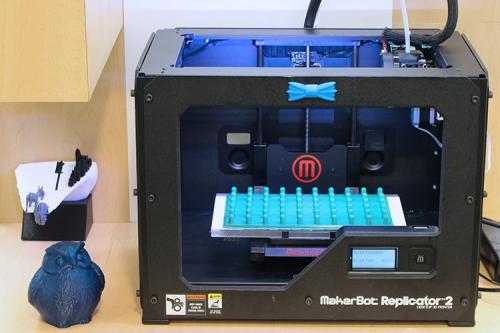Master batch: 3D printing technology - “ladder to horizon” for the plastic industry

Master batch is the typical achievement of the plastic industry in the last decade, which created a new step for the plastic industry. Never before has the process of producing plastic been so simple and effective. Another achievement for the plastic industry is 3D printing, plastic materials are more accurate, more suitable. 3D printing techniques if as for a new step in the plastic industry.
What are the characteristics of 3D printing that affect master batch industry?
Nowadays master batch industry, almost every molding or plastic injection technique requires a mold, it means plastic will be poured into molds and allowed to dry. These methods will benefit the mass production process, however, the cost of designing and molding is very expensive. Besides, this process requires a lot of time and effort because the mold has to be perfect or there is no next step to repair all products and industrial production systems will return to the industry. traditional works. This is very time consuming and laborious for the manufacturer.
The demand for plastic production is increasing, the requirements for master batch molds are more and more complicated. When implementing plastic molding technology, each specific plastic product requires a corresponding mold. This becomes a challenge for manufacturers who want to produce more types of products because they have to spend more money to design and prepare more molds. Or vice versa, this also makes it difficult for anyone who just wants to produce limited quantities because of complicated and time-consuming process. Under that circumstance, a method appeared, like a gift from God to the plastics industry, of 3D printing. It was developed as an alternative method of solving these problems in master batch industry.
The plastic master batch which is commonly used in 3D printing
Plastic has many different types, each substrate combined with master batch and some additives will produce a different type of plastic. There are 25 types of 3D printing materials, from common PLA plastics, to thermoplastic plastics to make elastic products such as shoe covers, tank chains, conveyors, etc.Then technical plastic POM, Acrylic . Fine arts will have specialized materials for imitation wood, steel, copper, .. and materials that change color when light is illuminated, then reflective materials.
PLA plastics - household-friendly plastics
This is considered the most popular plastic for home devices because it is non-toxic, easy to print and has no odor. Made from cornstarch (but can also find sugarcane and cassava), making it biodegradable. This is friendly master batch for 3D printing. In addition, PLA emits a pleasant sweet aroma when heated. Moreover, it is suitable for food contact and it shrinks less than ABS when cooling. On the downside, PLA is less durable than ABS and is prone to heat. Therefore, for parts needed for technical purposes, it is better to use ABS. PLA has many colors. In addition, it is possible to give it the appearance of wood or metal. Like ABS plastic yarn.
Master batch materials for 3D printing cannot forget ABS plastic
ABS plastic is the second most common type of master batch, which used to produce heat-resistant, and often print in enclosed, human-free environments. Acrylonitrile butadiene styrene (ABS) got known as a common material in civil and industrial products such as lego toys, helmets, pretty good mechanical offset compensation will be more difficult due to high temperatures, large shrinkage (easy). cracked), and smelly, slightly toxic.
Post Your Ad Here
Comments